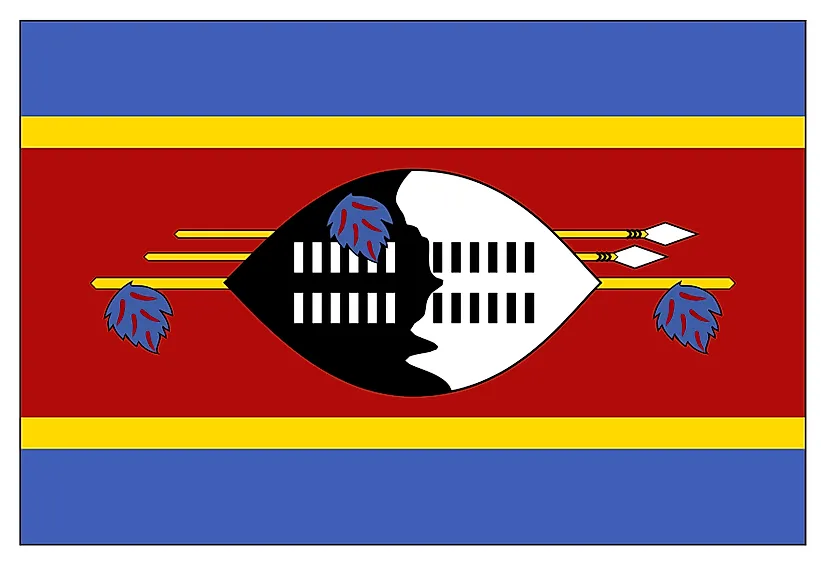
エスワティニ
| 大陸 | アフリカ |
| 資本金 | ムババネ |
| 人口 | 1,451,428 |
| GDP | $10.94 億ドル |
| 一人当たりGDP | $9,800 |
| ダイヤルコード | +268 |
| ISOコード(2文字) | SZ |
| ISOコード(3文字) | スワット |
エスワティニ 風景






エスワティニについて
エスワティニ(旧称スワジランド)へようこそ。エスワティニはアフリカ南部で古くからの伝統と近代的な発展が融合した国です。人口約120万人、面積17,364平方キロメートルのエスワティニは、豊かな文化遺産と多様な景観が融合し、伝統的な君主制と現代社会が融合したユニークな国です。
地理的特徴と自然の美しさ
標高1,862メートルの山々から低地のサバンナまで、エスワティニの地形はその小さな国土にもかかわらず、驚くほど多様性に富んでいる。国土は4つの地域に分かれている:ハイヴェルド、ミドルヴェルド、ローヴェルド、ルボンボ高原である。
ハイフェルト地方にはドラマチックな山々や森林が、ローフェルト地方にはアフリカン・サファリの典型的な風景が広がっている。ムリルワネ野生生物保護区やフラネ・ロイヤル国立公園では、サイやゾウ、数多くの鳥類など、この国の多様な野生生物を見ることができる。
国土の標高が変化に富んでいるため、近距離に複数の気候帯が存在し、多様な生態系と農業活動を支えている。マンテンガの滝をはじめとする川や滝が自然の美しさをさらに引き立てている。
文化遺産と伝統
エスワティニの文化は、君主制とスワジの伝統的な風習を中心としたもので、特にウムランガ(葦の舞)やインクワラといった儀式に顕著に表れている。これらの年中行事には何千人もの参加者と観客が集まり、文化遺産と団結を祝う。
伝統芸術には、独特のビーズ細工、草織り、木彫りなどがある。スワジの音楽とダンスは今でも文化生活に欠かせないもので、儀式や行事に合わせた特別なパフォーマンスが行われている。
近代的な制度と並んで伝統的な統治機構が強く維持されており、君主制が文化的・政治的生活の中心的な役割を果たしている。伝統的な服装、特に儀式の際の服装は、国の豊かな文化遺産を反映している。
歴史の旅
エスワティニの歴史は、初期の入植から植民地支配を経て、1968年の独立に至る。イギリスの保護の下、植民地時代を通じて王制と伝統文化の多くを独自に維持してきた。
ここ数十年、スワジランドは伝統的な統治と近代的な開発課題のバランスをとってきた。2018年のスワジランドからエスワティニへの名称変更は、伝統的なアイデンティティへの回帰を反映している。
現代の経済状況
今日のエスワティニは、農業、林業、鉱業、製造業を基盤とした多様な経済を持っている。砂糖の生産と繊維産業で知られる一方、観光業も重要な産業として成長を続けている。
最近の開発イニシアティブは、インフラ整備と経済の多様化に重点を置いている。地域経済共同体への加盟が貿易と開発を支えている。
国際関係とグローバルポジション
エスワティニは地域組織に積極的に参加し、さまざまな国際的パートナーシップを築いている。絶対君主制国家としてのユニークな地位と文化遺産は、国際的な注目を集めている。
ご存知でしたか?
- エスワティニはアフリカ最後の絶対王政?
- ウムランガ(葦の舞)の儀式には、毎年何千人もの参加者が集まる?
- 同国は世界で最もHIV感染率が高い国のひとつだが、治療においては大きな進歩を遂げている。
- エスワティニは、リサイクルガラスからユニークなハンドメイドのガラス製品を生産している。
結論
エスワティニは、現代のアフリカにおいて、伝統的な統治と文化を顕著に保っている。山岳地帯の高地から低地のサバンナまで、伝統的な儀式から発展途上の産業まで、エスワティニは独自の文化的アイデンティティを維持しながら進化し続けている。エスワティニは、経済発展や公衆衛生などの現代的な課題に取り組む一方で、持続可能な開発を追求しながら、独自の遺産を守ることに力を注いでいる。